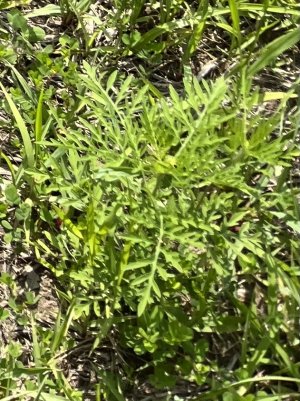-
If you are posting pictures, and they aren't posting in the correct orientation, please flush your browser cache and try again.
Edge
Safari/iOS
Chrome
You are using an out of date browser. It may not display this or other websites correctly.
You should upgrade or use an alternative browser.
You should upgrade or use an alternative browser.
Dr. Craig Harper - Manage Your Fields for Bigger Bucks and Better Hunting
- Thread starter BenA
- Start date
Wind Gypsy
5 year old buck +
Cool stuff.
I think this will encourage me to spray some fringe areas that were hay field to try to get more forbs regenerating. I'll say, the structure part seems like it'd be less applicable for us folks who have first frost dates in September. Maybe some of these forbs hold on later but wouldn't a lot of this stuff be dormant or already laying down come hunting season up here?
Also RE huntability - seems like bucks would be harder to pattern if all of their cover is also food?
Habitat like this makes a guy think of all the cool pics and info @Native Hunter has shared.
I think this will encourage me to spray some fringe areas that were hay field to try to get more forbs regenerating. I'll say, the structure part seems like it'd be less applicable for us folks who have first frost dates in September. Maybe some of these forbs hold on later but wouldn't a lot of this stuff be dormant or already laying down come hunting season up here?
Also RE huntability - seems like bucks would be harder to pattern if all of their cover is also food?
Habitat like this makes a guy think of all the cool pics and info @Native Hunter has shared.
Native Hunter
5 year old buck +
I really agree with most everything that Dr. Harper's teaches. He is a premier habitat guy. I do like a little higher percentage of tall native grasses than he does, because in my area that kind of cover is what mature bucks use the most for daylight travel. Even with more of a grass component, I still have enough of a forb presence to accomplish what he is talking about. And, as he pointed out - by hunting season, deer are beginning to transition to woody browse for their primary food - with forbs becoming less important at that time of year. That's when a good cool season food plot is worth its weight in gold as well as early successional woody browse and mast trees. My goal is to have it all and have it laid out in a huntable way.Cool stuff.
I think this will encourage me to spray some fringe areas that were hay field to try to get more forbs regenerating. I'll say, the structure part seems like it'd be less applicable for us folks who have first frost dates in September. Maybe some of these forbs hold on later but wouldn't a lot of this stuff be dormant or already laying down come hunting season up here?
Also RE huntability - seems like bucks would be harder to pattern if all of their cover is also food?
Habitat like this makes a guy think of all the cool pics and info @Native Hunter has shared.
I have done a lot of what he talks about with killing unwanted species and letting more desirable species take the open space. Over time, this really pays off and starts making a difference.
My favorite areas of the farm are where my food plots transition into the prairie as shown below. You get both worlds coming together.
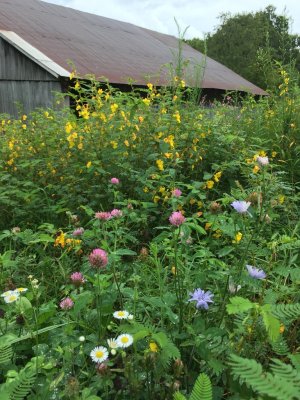
I have mostly little bluestem. It is not tall enough to provide much cover. My biggest problem is more labor to keep the nwsg beat back so it wont suppress all the forbs. To be perfectly honest, I see no benefit to the little bluestem, indian grass, and gama grass. Deer will definately eat the forbs if the grass hasnt choked them out. Rarely, as in five times in 20 years, have I seen a deer bed in a field. But, I have more bedding cover than any other cover type.
BenA
5 year old buck +
He talks about 2 methods they've found successful in thinning the amount of NWSG in that video.I have mostly little bluestem. It is not tall enough to provide much cover. My biggest problem is more labor to keep the nwsg beat back so it wont suppress all the forbs. To be perfectly honest, I see no benefit to the little bluestem, indian grass, and gama grass. Deer will definately eat the forbs if the grass hasnt choked them out. Rarely, as in five times in 20 years, have I seen a deer bed in a field. But, I have more bedding cover than any other cover type.
RestoringtheGround
Yearling... With promise
Swamp cat, either disc strips in the winter months (November-February), or burn in September. Either of these options will help produce forbs.I have mostly little bluestem. It is not tall enough to provide much cover. My biggest problem is more labor to keep the nwsg beat back so it wont suppress all the forbs. To be perfectly honest, I see no benefit to the little bluestem, indian grass, and gama grass. Deer will definately eat the forbs if the grass hasnt choked them out. Rarely, as in five times in 20 years, have I seen a deer bed in a field. But, I have more bedding cover than any other cover type.
Dr Harper and John Grouchy wrote a paper about Old Field Habitat and I just did a podcast talking about the article.
I did soil disturbance in January and February and produced a lot of forbs.
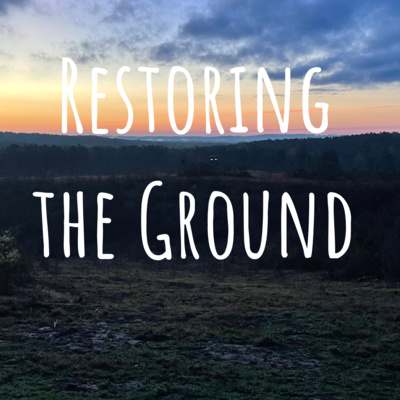
What is an Old Field? by Restoring the Ground
In this episode I reference an article by Dr Craig Harper and John Grouchy about Old Field Habitat. I break down their article talking about the 3 components of an Old Field: Forms, Grasses, and Shrubs/Brambles. I talk about the varieties of these and their benefits from nutrition. I hope you...
I have a link to the article on my Facebook page.
Thanks - someone on here included a study showing herbicides or disking would reduce the nwsg component. That study indicated fire would not reduce the nwsg. I am going to bushhog some of it and then disk and also spray cleth and compare the two.Swamp cat, either disc strips in the winter months (November-February), or burn in September. Either of these options will help produce forbs.
Dr Harper and John Grouchy wrote a paper about Old Field Habitat and I just did a podcast talking about the article.
I did soil disturbance in January and February and produced a lot of forbs.

What is an Old Field? by Restoring the Ground
In this episode I reference an article by Dr Craig Harper and John Grouchy about Old Field Habitat. I break down their article talking about the 3 components of an Old Field: Forms, Grasses, and Shrubs/Brambles. I talk about the varieties of these and their benefits from nutrition. I hope you...podcasters.spotify.com
I have a link to the article on my Facebook page.
RestoringtheGround
Yearling... With promise
You are correct. I got my information twisted. Burning in September sets back woody components and releases legumes.Thanks - someone on here included a study showing herbicides or disking would reduce the nwsg component. That study indicated fire would not reduce the nwsg. I am going to bushhog some of it and then disk and also spray cleth and compare the two.
I’ve burned in 3 different seasons this years: mid March, late May, and mid July (yesterday). I plan to burn again in September on a different spot.
I want to compare the results and use those results to create future plans for when and where I will burn on my property.
I will be turning dirt over in my old field settings EVERY February because the results from this year were phenomenal. The deer have been hammering the forbs in the areas that I did this work last winter. With the work that I am doing, and the food that is being produced, I see zero reason for summer time plots.
I may plant a few next summer just to see what the results are like. I’m going completely the method of regenerative agriculture with my food plots and not using any fertilizer. It may take a few years to build the soils.
BenA
5 year old buck +
I'm almost positive Cleth was shown to not change the density of NWSGs in studies. You're going to have to double check me on that though. Pretty sure it was imazapyr or gly that were the two that promoted the best forb response. And, gly was only suggested if there were hardly any desirable forbs present or sericea was a problem. Here's a good publication by Jared Brooke and Dr. Harper on it.Thanks - someone on here included a study showing herbicides or disking would reduce the nwsg component. That study indicated fire would not reduce the nwsg. I am going to bushhog some of it and then disk and also spray cleth and compare the two.
I think you are correct. I was just wanting to try some cleth to see if it at least thinned the grass because I have some forbs I would like to save - if it doesnt do much at all - will switch to gly.I'm almost positive Cleth was shown to not change the density of NWSGs in studies. You're going to have to double check me on that though. Pretty sure it was imazapyr or gly that were the two that promoted the best forb response. And, gly was only suggested if there were hardly any desirable forbs present or sericea was a problem. Here's a good publication by Jared Brooke and Dr. Harper on it.
Hoytvectrix
5 year old buck +
One thing that is kind of interesting with watching that video, is that it really simplifies the process for people who are looking to improve food and cover from an old pasture. For many, the cost-share programs through NRCS may not be necessary. On a farm I bought this spring, we were planning on converting around 60 acres to native grasses through drilling. This is making me second guess whether or not it is necessary. At the very least, I will try and have a few split sections comparing the methods.
BenA
5 year old buck +
That's what I did. I had some through EQIP, and then I converted some food plots to old field through the gly method and fall disking. I like the EQIP program because it paid for itself, but I like the old field conversion because I can manage it like I want. The EQIP is only a 5 year contract. So, I guess if I wanted to do something quick, I'd do old field conversion, but if I had a bunch and money was a factor, I'd do EQIP again.One thing that is kind of interesting with watching that video, is that it really simplifies the process for people who are looking to improve food and cover from an old pasture. For many, the cost-share programs through NRCS may not be necessary. On a farm I bought this spring, we were planning on converting around 60 acres to native grasses through drilling. This is making me second guess whether or not it is necessary. At the very least, I will try and have a few split sections comparing the methods.
Wind Gypsy
5 year old buck +
I’ll have to consult dr harpers food plot and wary secession book but curious on what folks see as some of the most desirable forbs to promote? Ragweed and goldenrod seem like good ones.
Nutritional content doesn’t mean much if they don’t eat it. I saw black eyed Susan listed in the video and I have a ton of it at home that doesn’t seem to get touched but lord help the ROD planted next to it that is mowed by the deer.
Nutritional content doesn’t mean much if they don’t eat it. I saw black eyed Susan listed in the video and I have a ton of it at home that doesn’t seem to get touched but lord help the ROD planted next to it that is mowed by the deer.
BenA
5 year old buck +
I've seen them turn on to different plants at different times. One plant I really like is pokeweed.I’ll have to consult dr harpers food plot and wary secession book but curious on what folks see as some of the most desirable forbs to promote? Ragweed and goldenrod seem like good ones.
Nutritional content doesn’t mean much if they don’t eat it. I saw black eyed Susan listed in the video and I have a ton of it at home that doesn’t seem to get touched but lord help the ROD planted next to it that is mowed by the deer.
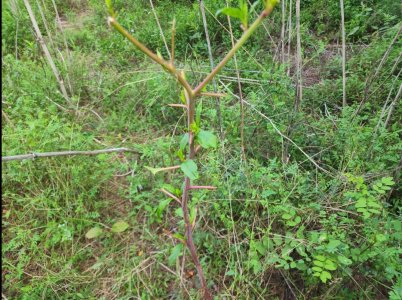
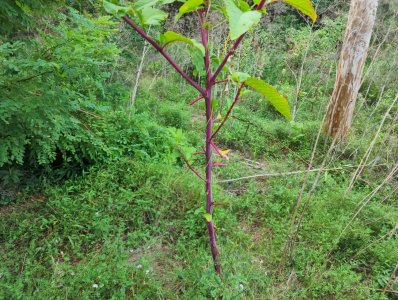
Native Hunter
5 year old buck +
It really varies a lot by location. The best example I can think of is pokeweed. This is one that Dr. Harper and many others see as a highly preferred forb, but at my farm, deer will barely touch it at all. However, at my home (20 miles away) they will come up in my yard at night and devour it where it grows in the fence rows.I’ll have to consult dr harpers food plot and wary secession book but curious on what folks see as some of the most desirable forbs to promote? Ragweed and goldenrod seem like good ones.
Nutritional content doesn’t mean much if they don’t eat it. I saw black eyed Susan listed in the video and I have a ton of it at home that doesn’t seem to get touched but lord help the ROD planted next to it that is mowed by the deer.
Another factor is the time of the year. A good example is Black-eyed Susan. I see it browsed in the early spring but seldom touched later in the year.
Another factor is availability. Giant ragweed and common ragweed are both browsed well at my farm, but I think I see Giant is browsed the hardest - but that could be because I have less of it and notice it more.
Below is the top browse forbs on my place:
Chicory
Clovers
Common Ragweed
Giant Ragweed
Tick trefoils
Jewelweed
Fleabanes and asters
Partridge Pea
There are others, but I think these are the primary ones. I just checked and it looks like my prairie thread has come back to life with the pictures reappearing. You can find some good forb info there:
Take a walk with me through the prairie
First of all, this is not a property tour thread. It about plants that grow in a prairie. Most of you are aware that I manage roughly 60 acres of NWSGs and forbs on my farm. I'm going to start a thread using some old pictures, pictures I took this spring, and some pictures I plan to take...
 habitat-talk.com
habitat-talk.com
356
5 year old buck +
I enjoyed this privilege of studying under Dr. Harper for the last three days. Relating to Pokeweed especially, he noted that deer will prefer this forb in one field, and at another site a few miles away they will not touch it. This is true of other plants and the reason is not fully understood,. Early theories such as sulfur or mineral content have not proven correct, and he used this to illustrate how much is left to be understood about deer and deer biology,The best example I can think of is pokeweed. This is one that Dr. Harper and many others see as a highly preferred forb, but at my farm, deer will barely touch it at all. However, at my home (20 miles away) they will come up in my yard at night and devour it where it grows in the fence rows.
Craig also introduced us to the Green Garde JD9-C sprayer gun. WOW… I ordered one along with some quick connect couplers to use with my UTV sprayer and backpack sprayer.
Last edited:
356
5 year old buck +
Ragweed is one that grows well in our area and is one Harper likes to see. It is highly nutritional for deer, and great for turkey and quail. It also removes toxins from the soil and improves overall soil health.I’ll have to consult dr harpers food plot and wary secession book but curious on what folks see as some of the most desirable forbs to promote? Ragweed and goldenrod seem like good ones.
Nutritional content doesn’t mean much if they don’t eat it. I saw black eyed Susan listed in the video and I have a ton of it at home that doesn’t seem to get touched but lord help the ROD planted next to it that is mowed by the deer.
My failed warm season planting last spring resulted in an amazing field of ragweed. I have about 1 acre of edge that I sprayed and amended, followed by a planting in alfalfa and clover. The drought resulted in a failed plot. However, the ragweed took over. The deer are preferring the ragweed to our clover plots at this time. With a crude protein that can be over 20%, this is a high quality browse that is drought tolerant, which is what we needed this year. I am glad it was in the seedbed, as it has proven to be a preferred browse for the June lactating and antler growth season, and is still getting browsed heavily as the drought continues.
Attachments
BenA
5 year old buck +
Well, I'm jealous. Deer Steward course?I enjoyed this privilege of studying under Dr. Harper for the last three days. Relating to Pokeweed especially, he noted that deer will prefer this forb in one field, and at another site a few miles away they will not touch it. This is true of other plants and the reason is not fully understood,. Early theories such as sulfur or mineral content have not proven correct, and he used this to illustrate how much is left to be understood about deer and deer biology,
Craig also introduced us to the Green Garde JD9-C sprayer gun. WOW… I ordered one along with some quick connect couplers to use with my UTV sprayer and backpack sprayer.
You would think it has something to do with what they have available and how good their local plants are. Like, a deer in a sea of soybeans may not go after pokeweed, but I've seen that to be false. Even what would seem to be low quality browse can be gobbled up by even the most well cared for deer. When I worked at the deer research facility at LSU, we did a little curiosity experiment by bringing in limbs of different trees and plants to see what was preferred. These were deer that had the best diet you can think of. When they defoliated a sweetgum branch along with privet, I came away thinking those deer just needed more roughage. Who knows. It just went to show that even the boujiest of deer will eat the lowliest of plants sometimes.
Howboutthemdawgs
5 year old buck +
Man I really want to believe things like ragweed and poke and beggar‘s lice are all super important and a holistic way to grow inches on a rack. But color me skeptical. I have pokeweed and ragweed in spades on my place and the deer don’t appear to touch it. The low hanging fruit that I see along roadways or field edges are not touched. I think when you have an abundance of agriculture in an area the selection preference is so skewed towards beans and alfalfa (if it’s in the area) that all else is maybe touched in passing but little else. Beans are king and little else matters when they are popping.Well, I'm jealous. Deer Steward course?
You would think it has something to do with what they have available and how good their local plants are. Like, a deer in a sea of soybeans may not go after pokeweed, but I've seen that to be false. Even what would seem to be low quality browse can be gobbled up by even the most well cared for deer. When I worked at the deer research facility at LSU, we did a little curiosity experiment by bringing in limbs of different trees and plants to see what was preferred. These were deer that had the best diet you can think of. When they defoliated a sweetgum branch along with privet, I came away thinking those deer just needed more roughage. Who knows. It just went to show that even the boujiest of deer will eat the lowliest of plants sometimes.
I live in a neighborhood known as a conservation community. So basically for every acre that is developed 1 acre has to be set aside as undeveloped. So we have roughly 350 acres of open land in my neighborhood. The deer are everywhere. Well anywhere they disturb the ragweed pops. So last year when they were putting in a water line along the edge of a road that bordered some woods and pasture I would pay attention to what the deer were eating. They would literally walk through a mile of ragweed to go feed in a fescue pasture.
With that said I still try to manage for those forbs because I want to believe! And I know it provides cover for quail and poults and it dang sure beats the alternative I have coming up if left unmanaged.
BenA
5 year old buck +
I had a lease along the river in Louisiana soybean/wheat country. We had a 240 acre bean/wheat field in the middle of 2100 acres of bottomland select cut timber and more soybeans/wheat around that. The deer devoured pokeweed there. I don't know what all the factors are that cause such disparity in the diets of deer, but we see examples of it everywhere, even in very close proximity.Man I really want to believe things like ragweed and poke and beggar‘s lice are all super important and a holistic way to grow inches on a rack. But color me skeptical. I have pokeweed and ragweed in spades on my place and the deer don’t appear to touch it. The low hanging fruit that I see along roadways or field edges are not touched. I think when you have an abundance of agriculture in an area the selection preference is so skewed towards beans and alfalfa (if it’s in the area) that all else is maybe touched in passing but little else. Beans are king and little else matters when they are popping.
I live in a neighborhood known as a conservation community. So basically for every acre that is developed 1 acre has to be set aside as undeveloped. So we have roughly 350 acres of open land in my neighborhood. The deer are everywhere. Well anywhere they disturb the ragweed pops. So last year when they were putting in a water line along the edge of a road that bordered some woods and pasture I would pay attention to what the deer were eating. They would literally walk through a mile of ragweed to go feed in a fescue pasture.
With that said I still try to manage for those forbs because I want to believe! And I know it provides cover for quail and poults and it dang sure beats the alternative I have coming up if left unmanaged.
Similar threads
- Replies
- 41
- Views
- 5K

